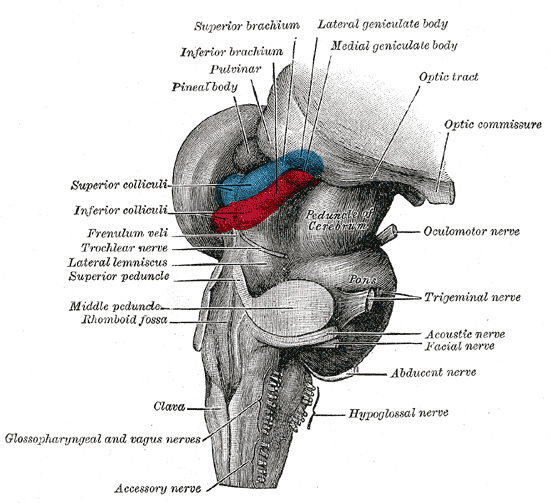Superior colliculus
From Psy3241
The superior colliculus (Latin, higher hill) is a paired structure that is part of the brain's tectal area.
Superior Colliculus neurons respond to visual, auditory and somatosensory stimuli.
Structure and Location
The two superior colliculi are located below the thalamus and suround the pineal gland.
It comprises the caudal aspect of the midbrain.
The inferior and superior colliculi are known collectively as the corpora quadrigemina.

Function
The superior colliculus is involved in the generation of saccadic (fast) eye movements and eye-head coordination. Sensory information that goes to the mesencephalon will be relayed via the thalamus to the cerebral cortex for interpretation. However, the superior colliculus can also mediate some oculomotor movements without cortical involvement. The colliculus as a whole is thought to help orient the head and eyes toward something seen and heard and thus, may be involved in mediating attention. In supra nuclear palsy, a disorder affecting subcortical regions such as the superior colliculi, patients are unable to properly orient their gaze. This inability to direct visual attention to salient stimuli is often called a "visual grasp", in which the patient often behaves as if they were blind (Stirling, 2000).
References
Stirling, J. (2000). "Introducing Neuropsychology". New York: Psychology Press.
